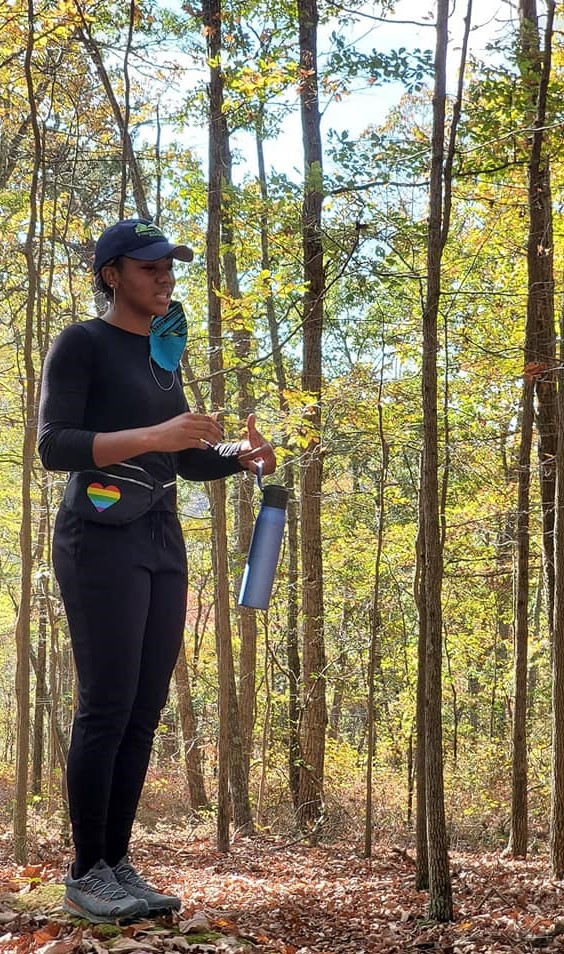$1 million available for projects that create or expand public open space
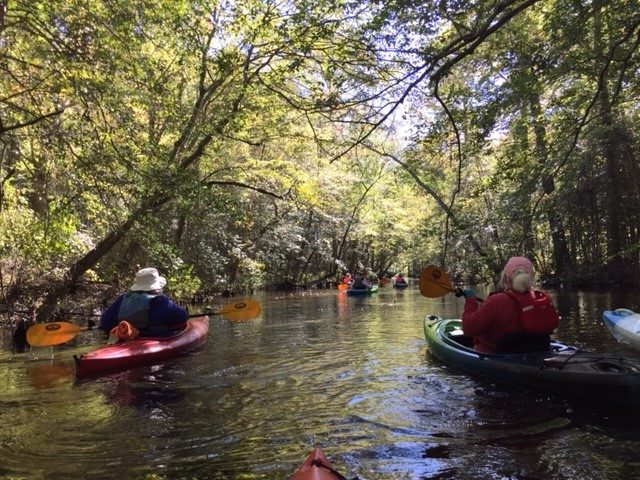
The Virginia Outdoors Foundation is making $1 million available from its Preservation Trust Fund (PTF) for grants that create or expand access to public open space in Virginia.
The grants may be used to acquire land, easements, rights of way, lease agreements, or other interests in real estate that result in significant public access. The real estate interest must be conveyed to either VOF or a local government to be eligible for funding, and protection must meet the requirements of Virginia’s Open-Space Land Act.
VOF has used PTF grants since 1997 to protect tens of thousands of acres of open space, ranging from family farms to public parks. In recent years, VOF’s Board of Trustees has earmarked a portion of the fund to be used exclusively for public access projects to meet the need for public open space as Virginia’s population grows.
The application deadline is December 18, 2020. The application form, eligibility requirements, and other materials may be found online at https://vof.org/ptf. VOF encourages potential applicants to contact staff prior to applying to discuss eligibility and seek guidance on producing a successful application. Contact grants@vof.org or (434) 282-7054 for information or to receive hardcopies of the application and supporting materials.
VOF launches program to increase equitable access to open space
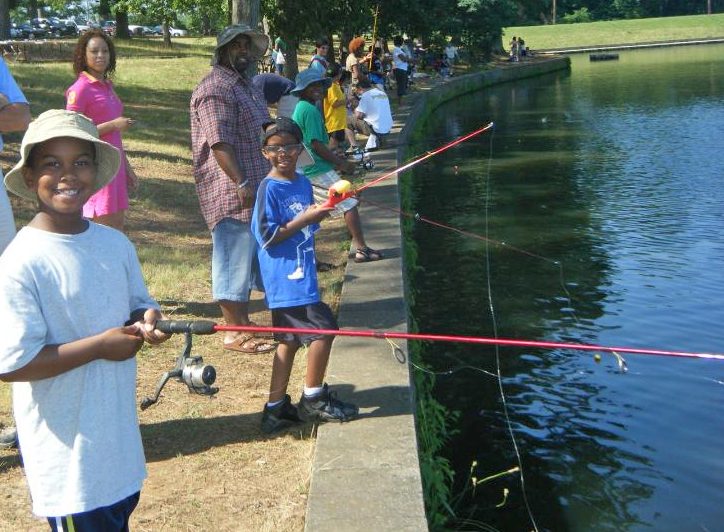
The Virginia Outdoors Foundation has created a new grant program, Get Outdoors (GO), that will provide grants of up to $25,000 for projects that increase equitable access to safe open space in Virginia’s communities.
The first grant round, which opens today, focuses on projects in communities that have been inadequately served, overlooked, or harmed by unfair zoning, housing, and land-use practices or other systemic discrimination.
“Virginia’s land conservation programs are some of the most successful in the nation, but they have traditionally served communities that have higher rates of land ownership and more access to public open space,” says VOF Executive Director Brett Glymph. “Large numbers of Virginians still do not have access to safe open space in their neighborhoods because of historic injustices, and VOF hopes to do its part in correcting this through Get Outdoors and other grant programs.”
Grants may be used to fund studies, planning, capacity building, and infrastructure to enable safe use of, or access to, public open space, as well as for acquisition. VOF is making $250,000 available for the 2020-2021 grant round. Individual projects may receive no more than $25,000. The minimum grant amount is $500.
The application deadline is December 18, 2020. The application form, eligibility requirements, and other materials may be found online at https://vof.org/go. VOF encourages potential applicants to contact staff prior to applying to discuss eligibility and seek guidance on producing a successful application. Contact grants@vof.org or (434) 282-7054 for information or to receive hardcopies of the application and supporting materials.
Wayside Park, Pittsylvania County
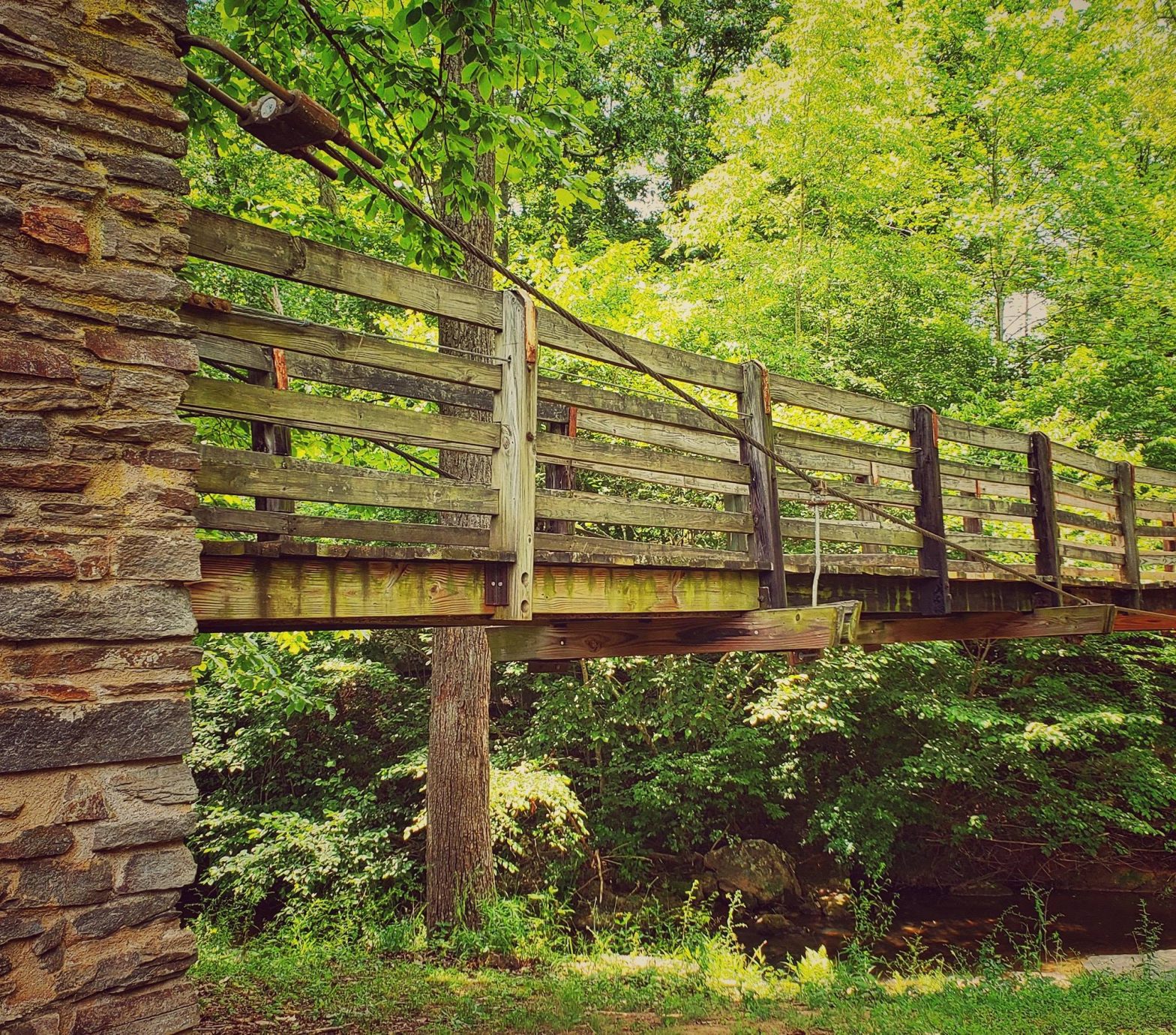
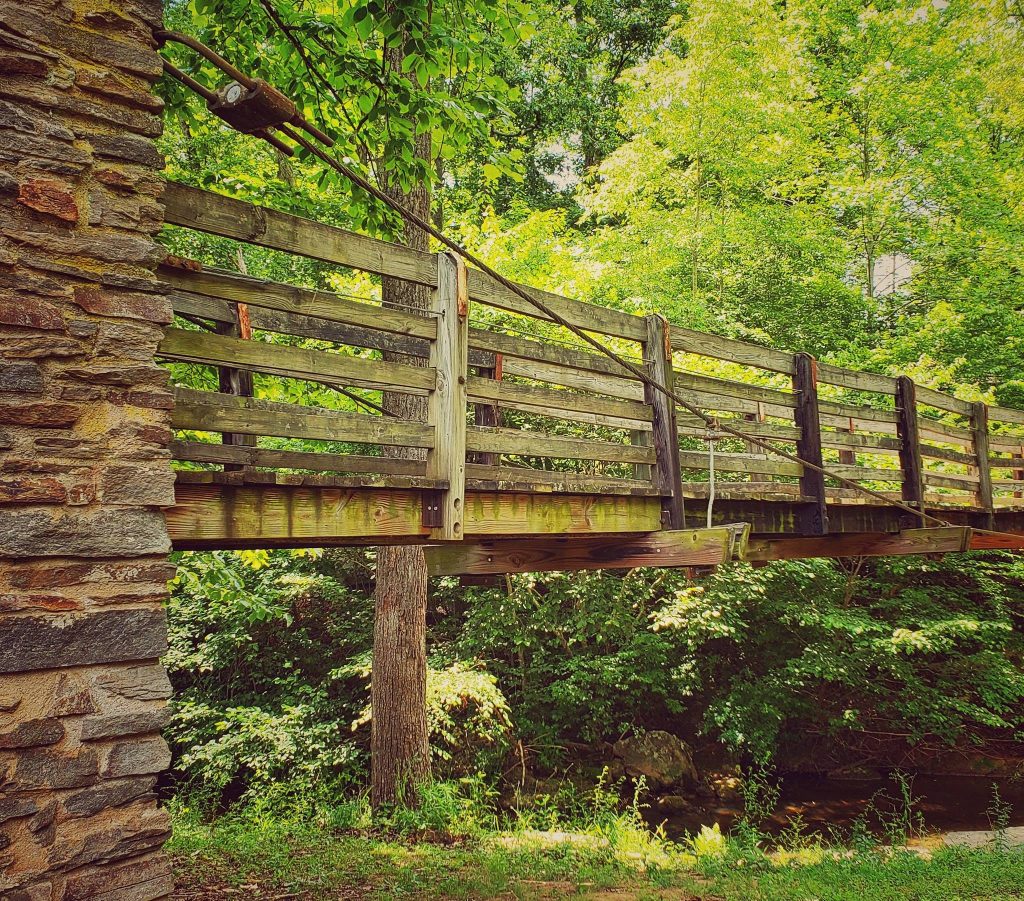
You can have outdoor recreation without a ball and a bat, Mark Moore likes to say. But when he was hired as director of the just-formed Pittsylvania Parks and Recreation department in 2011, he was tasked first and foremost with giving kids places to play sports.
“I came on to address a specific need,” he remembers. “And that was to create parks with sports fields where volunteer youth clubs could play.”
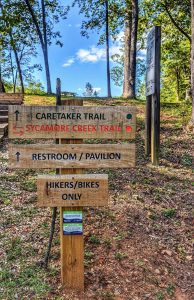
Ten years and twelve new athletic fields later, Moore has fulfilled that mandate, but he always felt strongly about the need for a different kind of park. “Wayside Park was something I had had my eye on,” he says, “but it was always at the bottom of the list.”
At just over 50 acres, the Depression-era Wayside Park had been a gathering place for the community for generations, hosting family and company picnics, school field trips, and even baptisms in Sycamore Creek, which runs through the property. In recent decades, however, the beloved park had fallen into disrepair. Moore hoped to change that. “It got to the point where it was not known for good things, but in my experience there’s a psychological element: If you have a park and you don’t take care of it, don’t be surprised if no one cares about it.”
Moore had promoted the health and economic benefits of renewing Wayside since he started the job, but he stepped up his efforts about three years ago. “The need was there, but people couldn’t see it,” he says. “People would ask, ‘Why do I need a park?’ After 22 years in local government, I’ve learned that governments tell you what’s important by what they fund, so a lot of it was just finding the money.”
Moore convinced the county to pitch in $150,000 as seed money, and he set to work finding the rest. After two years of grant applications, he had $850,000 to make improvements to the park. $106,460 of that money came from Virginia Outdoors Foundation to help with costs associated with protecting the property’s forest and for trail construction.
After improvements, Wayside now has more than three miles of paved and natural trails, a playground with zip line, and a new amphitheater, Sycamore Stage, which has already been rented out for weddings this year. New pickleball courts even provide some space for sports lovers. Restroom facilities have been renovated and expanded and the Virginia Department of Transportation has widened the entrance road and provided better parking.
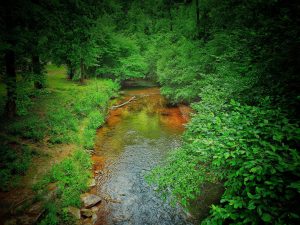
“I’m so impressed by the revitalization,” says Pastor Ben Horrocks of the Lane Memorial United Methodist Church in nearby Altavista. “Members of my church remember [Wayside] in its glory days years ago.”
Thanks to Moore’s advocacy and to community engagement, Wayside’s glory days are not all behind it. Many improvement projects were completed by local volunteers, including the “LOVE” sign at the entrance, installed by students at the Pittsylvania Career and Technical Center. Local Eagle Scouts built the Sycamore Stage as well as a wooden footbridge that connects two sections of trail, its railings providing bench seating with a view of Sycamore Creek.
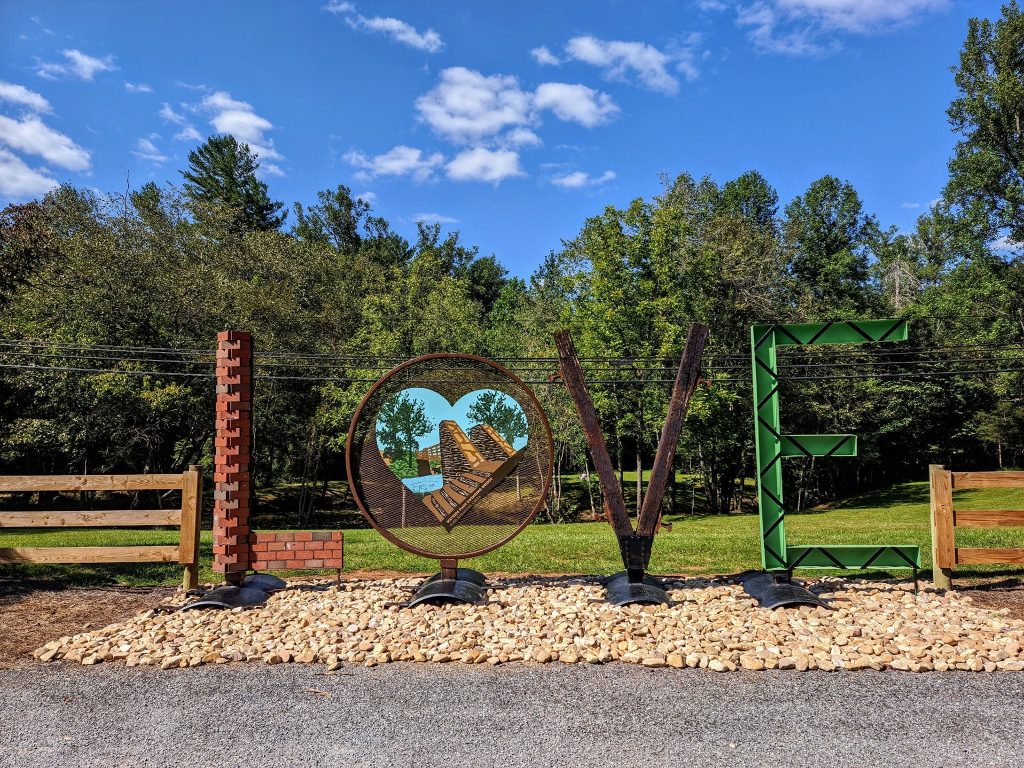
Other Eagle Scout projects are in the works, Moore says. “There are seven wayside parks in the Commonwealth, but this is Pittsylvania’s Wayside, and the community really reveres it.”
Completing the Wayside project, Moore says, is a nice way to end his time at Pittsylvania Parks and Recreation. He is moving to Rocky Mount, where he’s accepted a position as assistant town manager and director of community development. “I started with youth sports-centric gyms and bats and balls, but I’m leaving having revamped a park without an athletic field as its focus.”
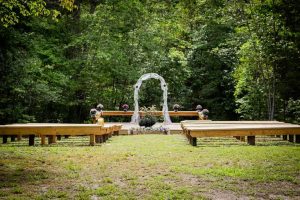
Moore stresses the importance of showing residents what an asset green space can be. “Quality of life and economic development are linked in the ways a park attracts people and businesses to a community,” he explains. Wayside Park lies adjacent to the town of Hurt’s city limits, across from an industrial park already benefitting from having a renewed green space with places to walk and picnic nearby.
“Now, when people ask, ‘Why do I need a park?’,” Moore says, “we can point to Wayside as the answer.”
For more information about Wayside Park, visit https://pittsylvaniacountyva.gov/609/Wayside-Park or call the Pittsylvania Department of Parks & Recreation at 434-432-7736.
Bruce and Elaine Ingram, Craig County
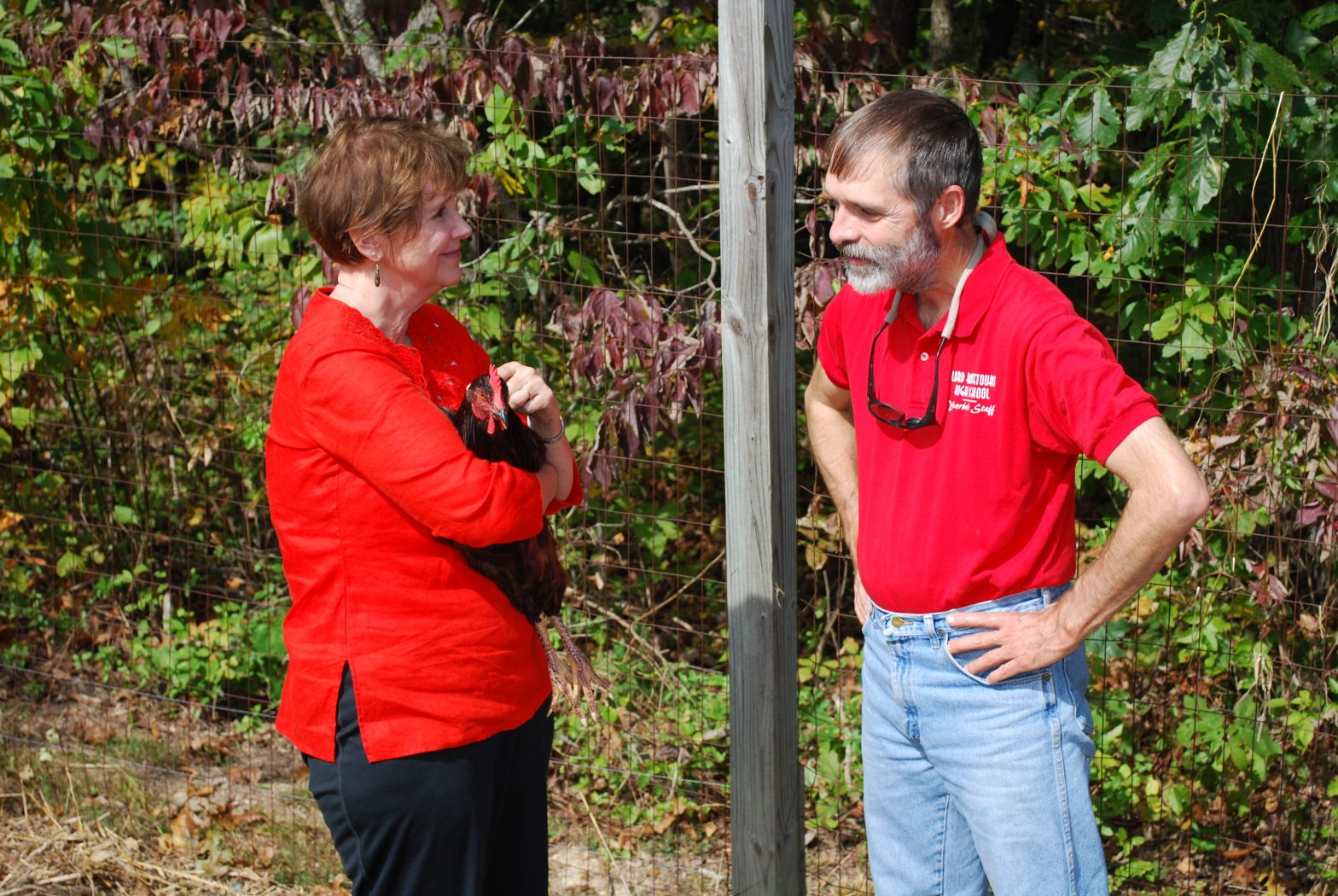
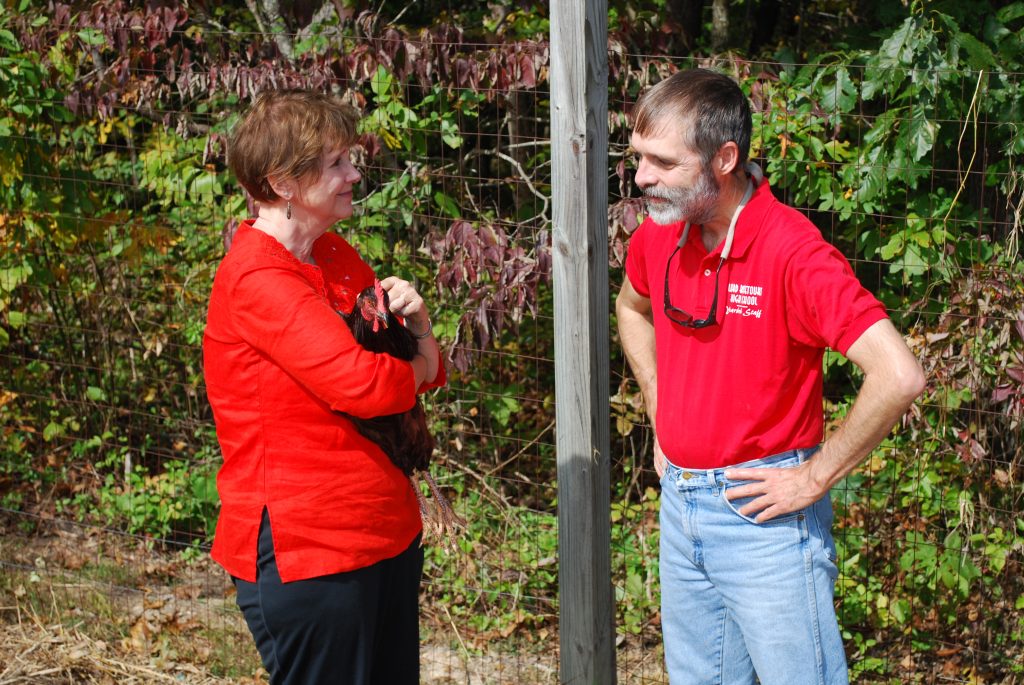
Every writer needs a muse. Bruce Ingram’s is the land.
With the help of his wife, Elaine, Bruce has served that muse with his two full-time jobs: Botetourt County high school English teacher and author. His book and article sales have helped finance the purchase of 640 acres of pristine mountain terrain, 444 acres of which the Ingrams have protected under easements held by the Virginia Outdoors Foundation and the Blue Ridge Land Conservancy.
Bruce has published on a variety of outdoor topics: four river guidebooks, a fishing guide, a locavore’s handbook, and thousands of articles for periodicals like Outdoor America (for which he is also a field editor) and Whitetail Times.
The Ingrams manage most of their land for wildlife, creating new forest out of old through selective cutting. “You can do a lot of things to make better wildlife habitat with just a chain saw,” Bruce explains. “I like to free up trees that produce fruit, seeds and nuts: dogwood, grapes, black gum, pawpaw. I have just a few persimmon trees and they are so valuable to wildlife. I like to daylight them so their crowns have room to spread out and produce more fruit.”

The land provides a bounty for several endangered species of songbird, as well as for the Ingrams themselves. Bruce hunts and fishes on the properties, and both he and Elaine forage. Elaine cooks from what they harvest—everything from wild berries and grapes to crabapples. This summer they harvested ten and a half gallons of blackberries, wineberries and raspberries. As Bruce puts it, “The land feeds us, we’ll pass it on to our kids, and it’ll feed them.”
While each of the properties provides ecological benefits that make them worth preserving, the 30-acre parcel on John’s Creek has both conservation and sentimental value, the Ingrams say. “I actually took Elaine fishing up there on our fourth date,” Bruce says. “I wanted her to know that I liked to fish and hunt from the very beginning.”
And that was fine by Elaine. “On our fifth date we decided to get married,” she adds.
The Ingrams would buy that property in 1984. “It’s a special place for us,” he says.
The John’s Creek property contains sandstone barrens, an ecological community designated for protection by the Virginia Department of Conservation and Recreation, a vernal pool and a spring. Bruce identified an endangered plant there, the American barberry, a native to the Appalachians, in 2019. Shagbark hickories also provide summer roosting sites for endangered Indiana bats.
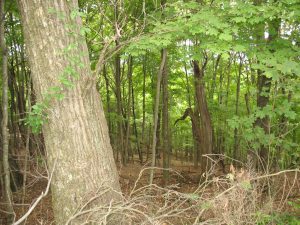
The easements make sure the land will be there to nurture future generations of songbirds, bats and, of course, Ingrams. In the meantime, Bruce continues to write when he’s not in the classroom or outdoors, earning money to buy and conserve more of the Commonwealth’s open spaces. His most recent work is a series of young adult novels about a different kind of wilderness: high school. It’s another ecosystem he’s come to know well over the years, and he is happy to show us around.
To see some of Bruce’s publications and to help support his conservation work, go to his Facebook page and website, linked below:
https://sites.google.com/site/bruceingramoutdoors/
https://www.facebook.com/Bruce-Ingram-Novelist-115869509805011/?modal=admin_todo_tour
Diary of an Entomologist; from insect identification to circulatory system exploration
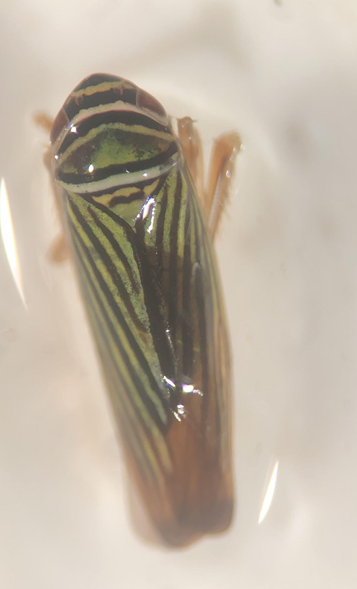
Hello everyone!
This last month of my fellowship has been SUPER intensive with identifying all the specimens I collected during my field work, so I decided to compile a short “diary” of all the cool aspects of this project. Here you can read about me struggling with water skater identification, nerding out about dragonflies, and having an overall great time as I begin to wrap up this fellowship!
August 1st, 2020
It’s Saturday and I still cannot believe that I am done with trapping for the season! In the beginning I thought my 9-mile round trip trapping route would be the hardest part, but that was before I started familiarizing myself with the intricate and confusing world of water skaters. “Familiarizing” is a really strong word to use here folks… really strong because the online keys I found were limited to the Midwest and England. Working with ants has made me incredibly privileged in terms of species identification tools. Myrmecologists (people who specialize in studying ants) document everything, all the time, in any format. Subsequently, there is a lot of existing literature on identifying ants.
Gerridae (water skaters) on the other hand? Not a whole lot, so there has been some time taken to try and identify my specimens as a result.
August 5th, 2020
Well, I realized that the “nymphs” I have been identifying as common water skaters are actually in a whole different genus. Misidentification is a hazard when doing the level of analysis this project requires! Aquarius nymphs (common water skater) bear a striking resemblance to adults in the family Trepobates. Time to go through the roughly 1,000 water skaters I have in my data so far and re-evaluate.
Below are three photos of three different specimens to help illustrate this confusion (and just how difficult identification can be).



Some things I learned this week:
- Water skaters have hydrophobic legs, meaning they repel water, allowing them to seemingly walk on the water’s surface ( when their legs are dry, they are silvery!).
- If you inhale ethanol fumes for 8 hours straight in a closed room, you will get a headache – open your windows if you’re doing intensive insect identification!
August 11th, 2020
Running total of insects identified? Hundreds of my specimens from aquatic, sweep net, and pitfall traps.
Check out this STUNNING photo taken through a dissection scope displaying the difference between the labiums (insect mouthparts, or, the lower lips) of two different dragonfly species. On the left we have a gomphidae (clubtail) easily identifiable from their 4 segmented and clubbed antennae, and on the right a cordulegaster (spiketail) with 6 segmented antennae and a spoon shaped labium – bonus points for the curved labium and cool teeth!
This is a sneak peek at one of the photos included in my upcoming pictorial guide of the insects I have collected this summer. Every time I encounter a different species on the preserve, I document it with a photo, mark out identifying characteristics, and pop it into a word document! The final product is on its way and will be publicly accessible.
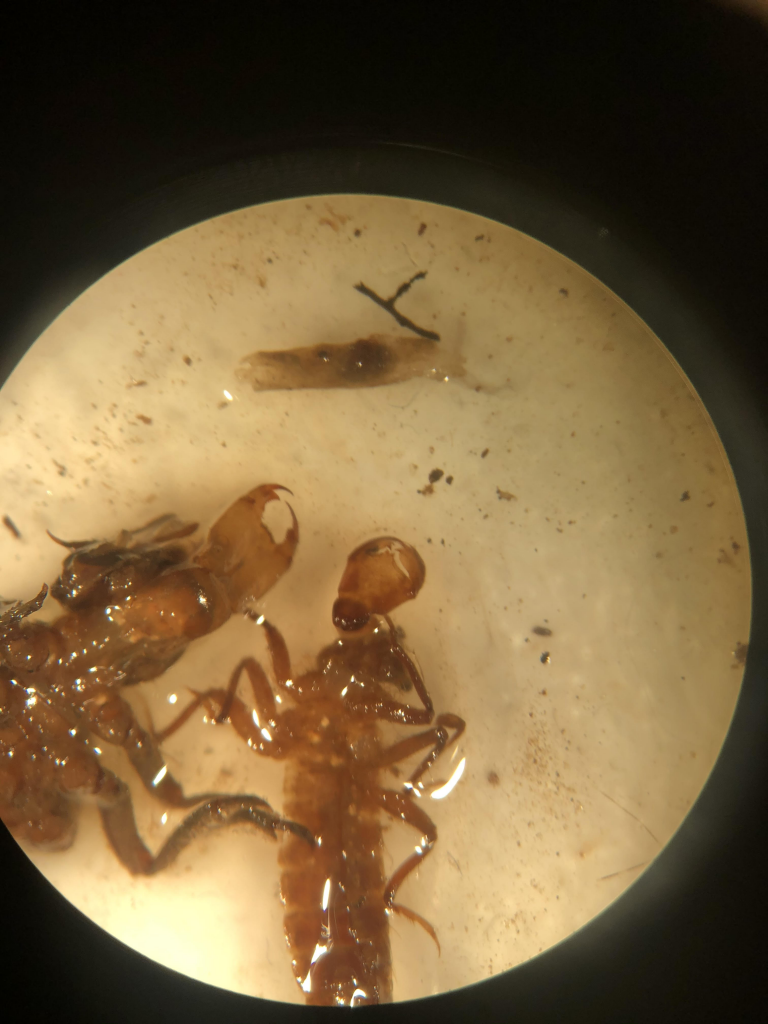
There are over 225 described terrestrial invertebrate species in the Blue Ridge Mountains that, when combined with the Appalachian Mixed Mesophytic Forests, contains the highest total amount of endemic flora and fauna species in North America! I have to be honest though, it feels like there are 225,000,000,000 invertebrate species in these mountains.
I am preparing for our upcoming “Entomology Field Day” later in August where I will be leading a hike on the South Section and discussing insect biodiversity and trapping methods with participants! I am excited to lead this hike and discuss with a new audience! My parents are running out of patience for “hey guys…wanna hear a bug fact??”
August 17th, 2020
Running total of insects identified? Hundreds more!
I’ve been jumping back and forth between my data lately- going from sweep net data to aquatic, to pitfall. I have just completed identifying my aquatic specimens, pitfall traps are halfway done, and sweep nets are done as soon as my organization system goes beyond writing everything down in a random order!
Here are some of my favorite sweep net finds so far!
To the right you can see the wide-footed treehopper (Campylenchia latipes)! These are the only treehoppers on the east coast with a pronotum (the little horn) extending in front of the body instead of behind. Treehoppers have incredibly distinctive communication calls (which they produce by creating vibrations through the plants they rest on), and you can listen to a great variety of them here.
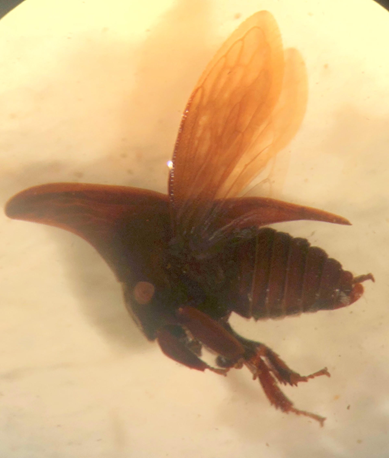

Look at the markings on this beautiful sharpshooter leafhopper! These guys are everywhere on the preserve right now, and even though they’re only about 2-5mm long, you’ll easily be able to distinguish them from other leafhoppers by those groovy markings.
And last but not least- this treehopper (which unfortunately had all the color leeched out of it from my ethanol preservative) strikes a POSE on the microscope dish- he could definitely be in the BeeGees (the TreeGees?? Anyone??).
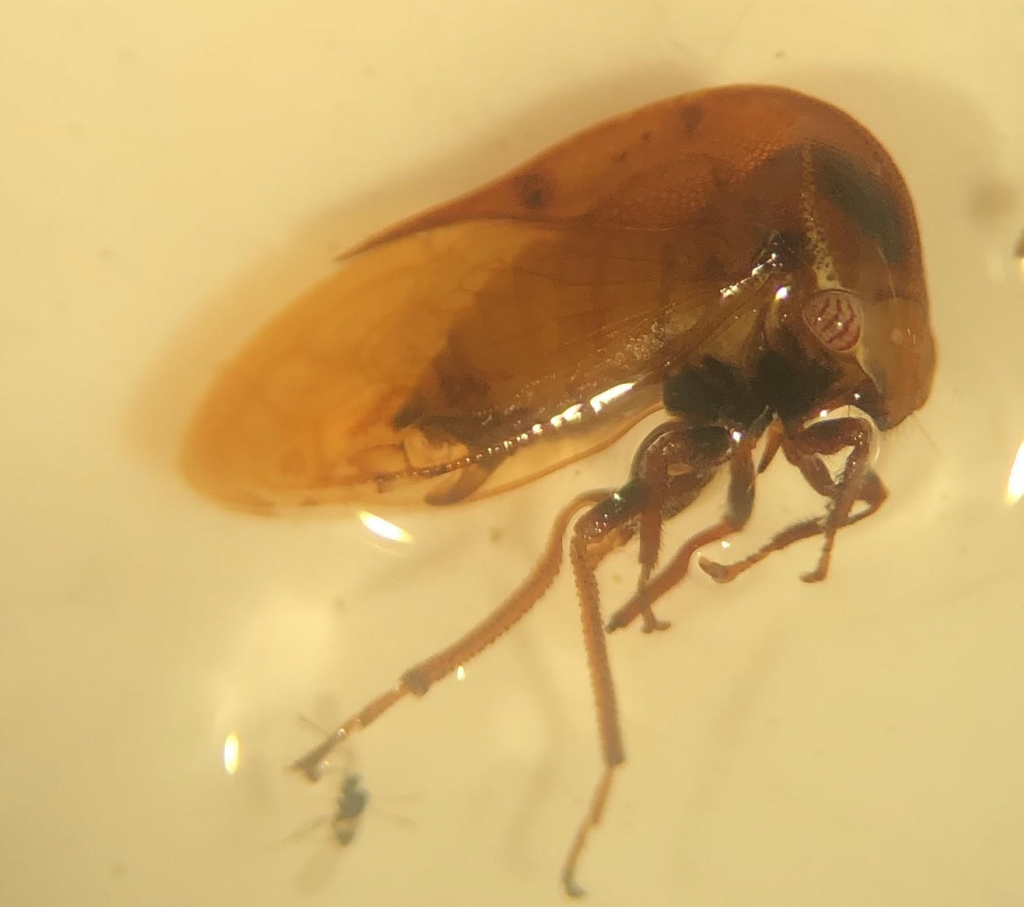
August 23rd 2020
I led a guided Entomology Field Day hike today on the South Section of the Preserve. I had such a great time getting to know some of the wonderful people who volunteer, support, and love The Preserve. We walked around the south section of the preserve, found spiders, beetles, beetle larvae, moths, and a lot of ants! There were some brilliant questions raised on the hike, one of which I would love to answer here, since I’m pretty sure it won’t be common knowledge!
Question: How does an open circulatory system work in insects?
Humans (as an example- all echinoderms and vertebrates have this) have a closed circulatory system- our blood is enclosed in vessels, and is pumped through the heart to different areas of the body, and blood does not fill body cavities.
Insects, on the other hand, have an open circulatory system, meaning that their “blood” (hemolymph, mostly water but containing hemoglobin/carbohydrates/glycerol/amino acids/etc.) flows openly in their bodies, without vessel constriction. It is also directly open to the environment in places like the digestive tract. The open circulatory system is advantageous for insects over a closed system because it uses less energy, so it is suited for animals with smaller and slower bodies. Instead of a heart, insects have a vessel on their dorsal (upper) side which moves the hemolymph around!
This graphic from The Robinson Library illustrates the open circulatory system (and is also a fantastic resource if you wish to learn more about circulatory systems):
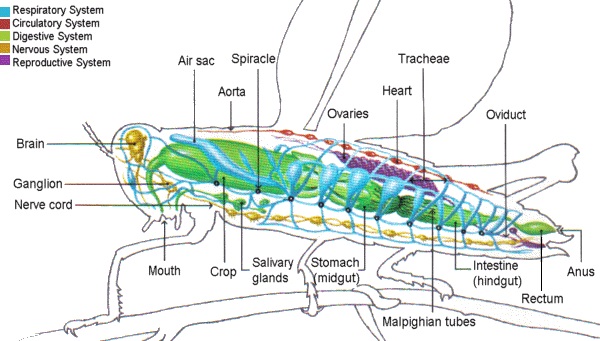
All in all, August was full of identification, analysis, and brain-blasting questions. Stay tuned for the final chapter of my fellowship and some more beautiful photos of insects!
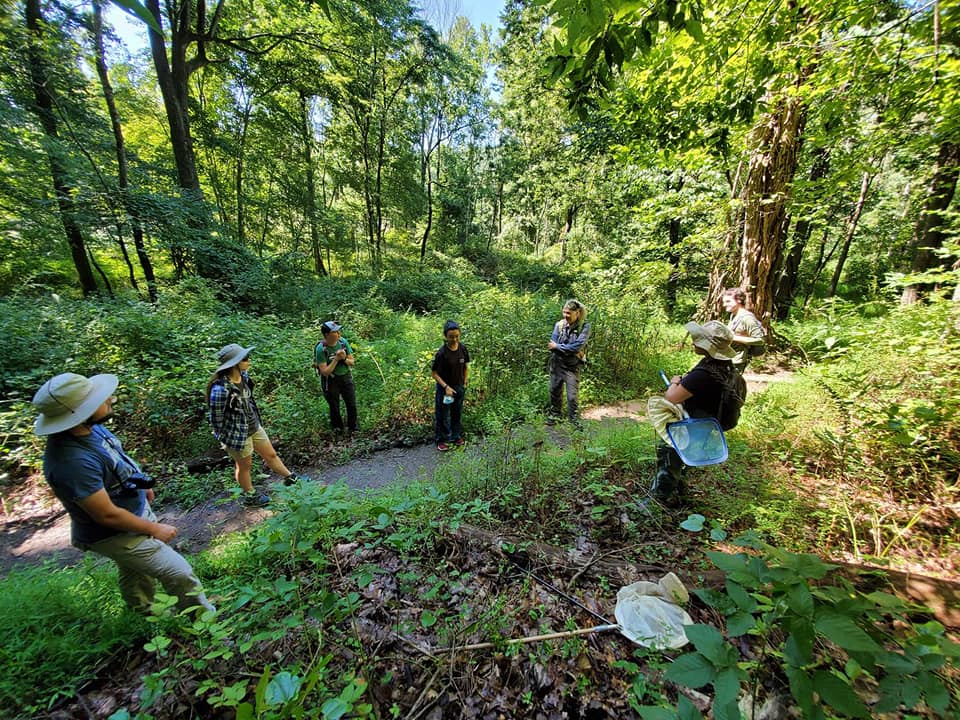
Mill Mountain, City of Roanoke
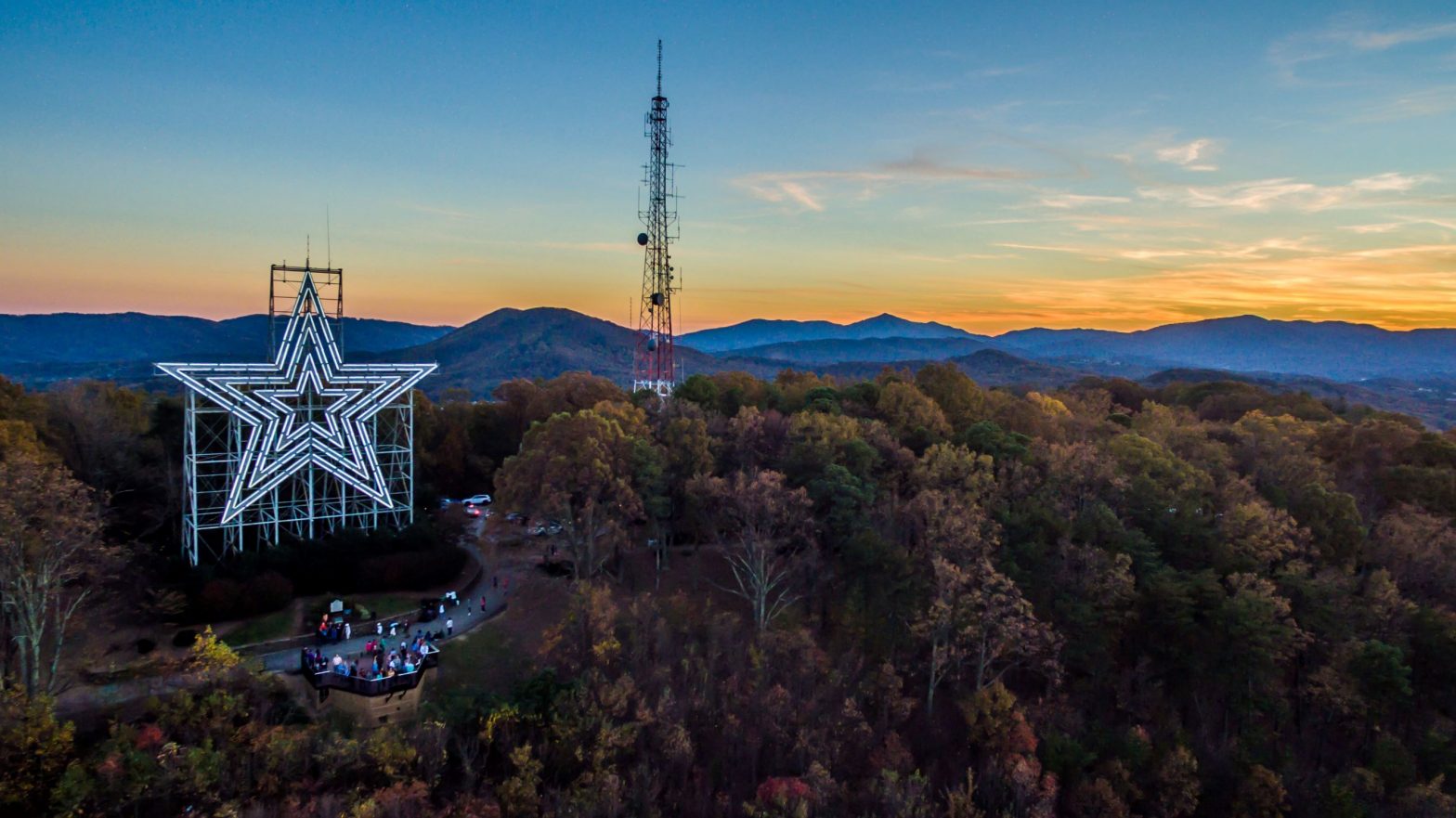
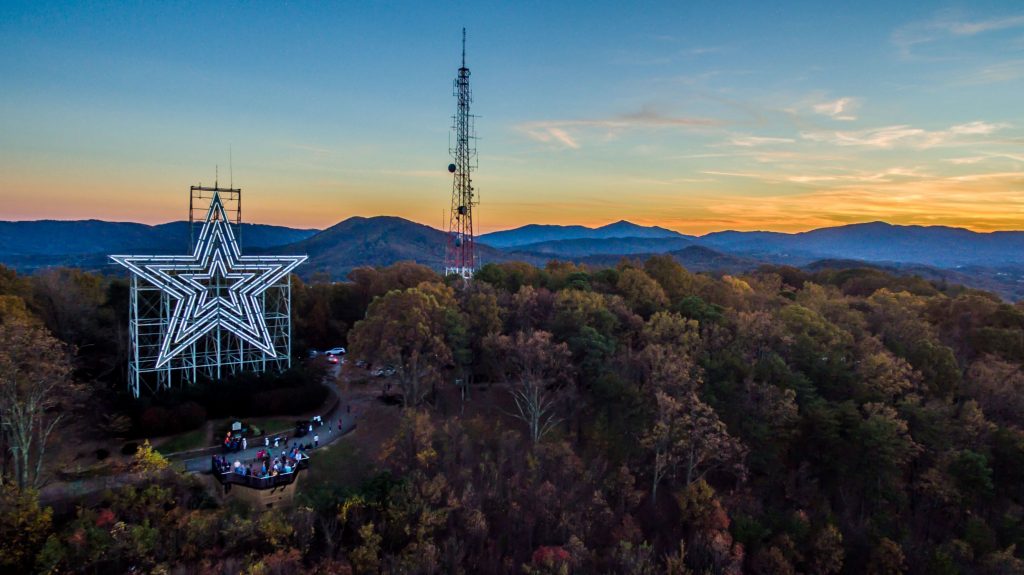
Mill Mountain, Roanoke City
It wasn’t always easy to get people to the top of Mill Mountain. At the turn of the 20th century, a trip to the summit overlooking downtown Roanoke meant a bumpy ride in a horse and carriage or a daunting trip up stone steps on foot.
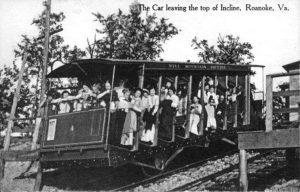
Remnants of those steps are still visible in the steep mountain slopes, as are portions of an incline railway that operated from 1910 until 1929. The old carriage road up the mountain was widened to accommodate motorized vehicles in the early 1920s. After that, the car was king. By the 1930s, 20,000 vehicles would take people up the mountain to enjoy the scenic views each year.
Now, a century later, Roanoke Parks and Recreation is developing a new trail plan to make it easier to leave the car at home. The plan will add more walkable and bikeable connections from neighborhoods to the base of the mountain, where the old mountain road—now a mixed-use pedestrian, biking and motorized vehicle route—helps make up part of the larger Roanoke Greenway System.
“If you live anywhere near a Roanoke greenway, you can get to the mountain,” says Renee Powers, who coordinates Roanoke Parks and Recreation’s trails and greenways. “But we want to keep improving connections, and the public can help. The landing page for public input will be up soon, and folks can weigh in with suggestions starting October 1st.”
Whether you choose to hike it, bike it, or drive it, there is much to do on the mountain. You can visit Roanoke’s famous neon star, which is located on an overlook with stunning views of the city and the valley and is listed on the National Register of Historic Places. You can also visit the park complex, where an education center and zoo give visitors opportunities to learn about nature up close.
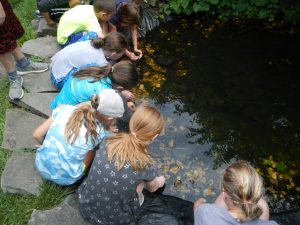
Matt Allenbaugh supervises environmental education programs and Mill Mountain Park for Roanoke Parks and Recreation. He manages the Discovery Center at the park, which offers programs oriented toward homeschooled students to supplement their nature- and science-based learning.
Classes meet for a Tuesday-Thursday session, and students can attend each of the five sessions per year. “Each session is different and tied to the season,” Allenbaugh says. “Students can attend all five times over the course of the year and not get the same thing.” In all, 120-150 children aged 6-10 come to the center each year to learn about the habitats, animals and trees in the park. There are plans to expand course offerings with more in-depth science and nature programming for older students.
The Discovery Center programs are on hold while coronavirus restrictions are in effect. The Mill Mountain Zoo is open, but at limited capacity. Reservations are encouraged and can be made here.
In the meantime, people are taking advantage of opportunities to explore the rest of the mountain. Powers says trail use has increased 200 percent since coronavirus restrictions began, although people are coming in smaller groups. “Lots of people who live here are rediscovering the outdoor recreational opportunities we have right here in town. They are looking less for organized events and more for ways to escape into nature,” she says.
That escape has been protected since 2010 by a conservation easement co-held by the Virginia Outdoors Foundation and the Blue Ridge Land Conservancy. The easement limits division of the property, as well as construction and timbering to protect the scenic and ecological values of the mountain, which is visible from and connects to the Blue Ridge Parkway.
As the trail planning committee expands trail offerings on the mountain itself, it is taking the protective measures of the easement
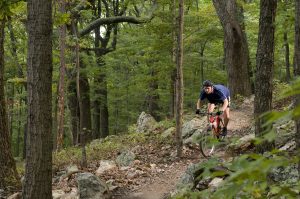
into account. “We were aware of the sensitive nature of forest ecology here, with its big trees and steep slopes, and we wanted to make sure we weren’t proposing anything that was going to compromise the integrity of the mountain habitat.” Powers states. “We explored every corridor on foot to look at grades, topography, and trees of value, so that we ended up restricting mechanized trail building through sensitive areas. Some trails will be built by hand.”
If you want to explore existing trails, and see the remnants of earlier attempts to get up the mountain, Roanoke Parks and Recreation has a map of the city greenways that can get you there. A printable map of the trails on the mountain itself is also available on the Roanoke Parks and Recreation website.
Webinar recording for Forest CORE Fund grant round now available
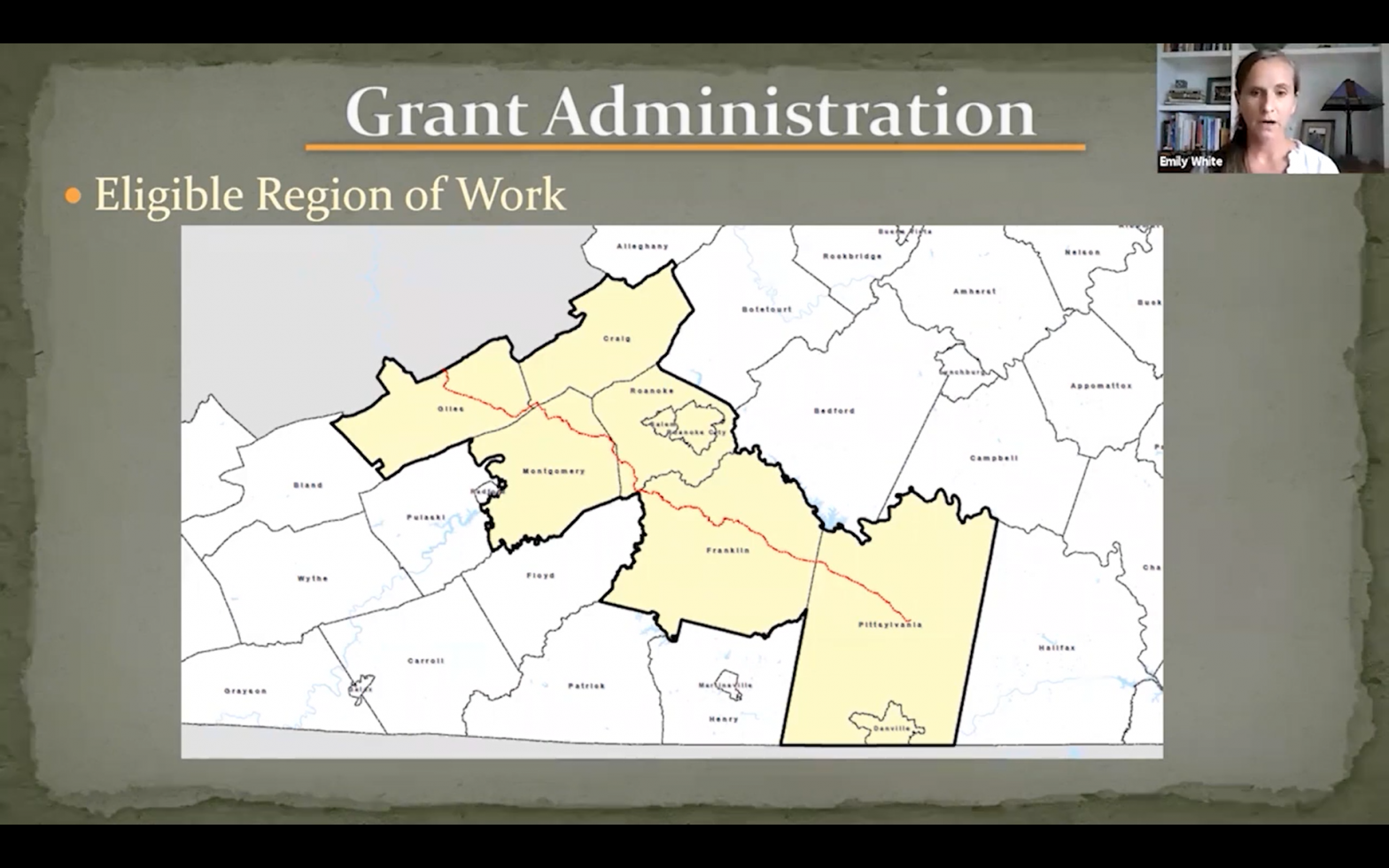
On September 3, 2020, the Virginia Outdoors Foundation held a webinar to discuss the 2020 grant round for the Forest CORE Fund with potential applicants. An overview of the grant round was provided, as well as a Q&A session. A recording of the webinar is below. The grant round is focusing on community-supported conservation projects in nine Southwest Virginia counties and cities: Craig, Danville, Franklin, Giles, Montgomery, Pittsylvania, Roanoke (city and county), and Salem. Questions about the program may be directed to program manager Emily White at ewhite@vof.org.
Two VOF-funded projects receive Governor’s Environmental Excellence Awards
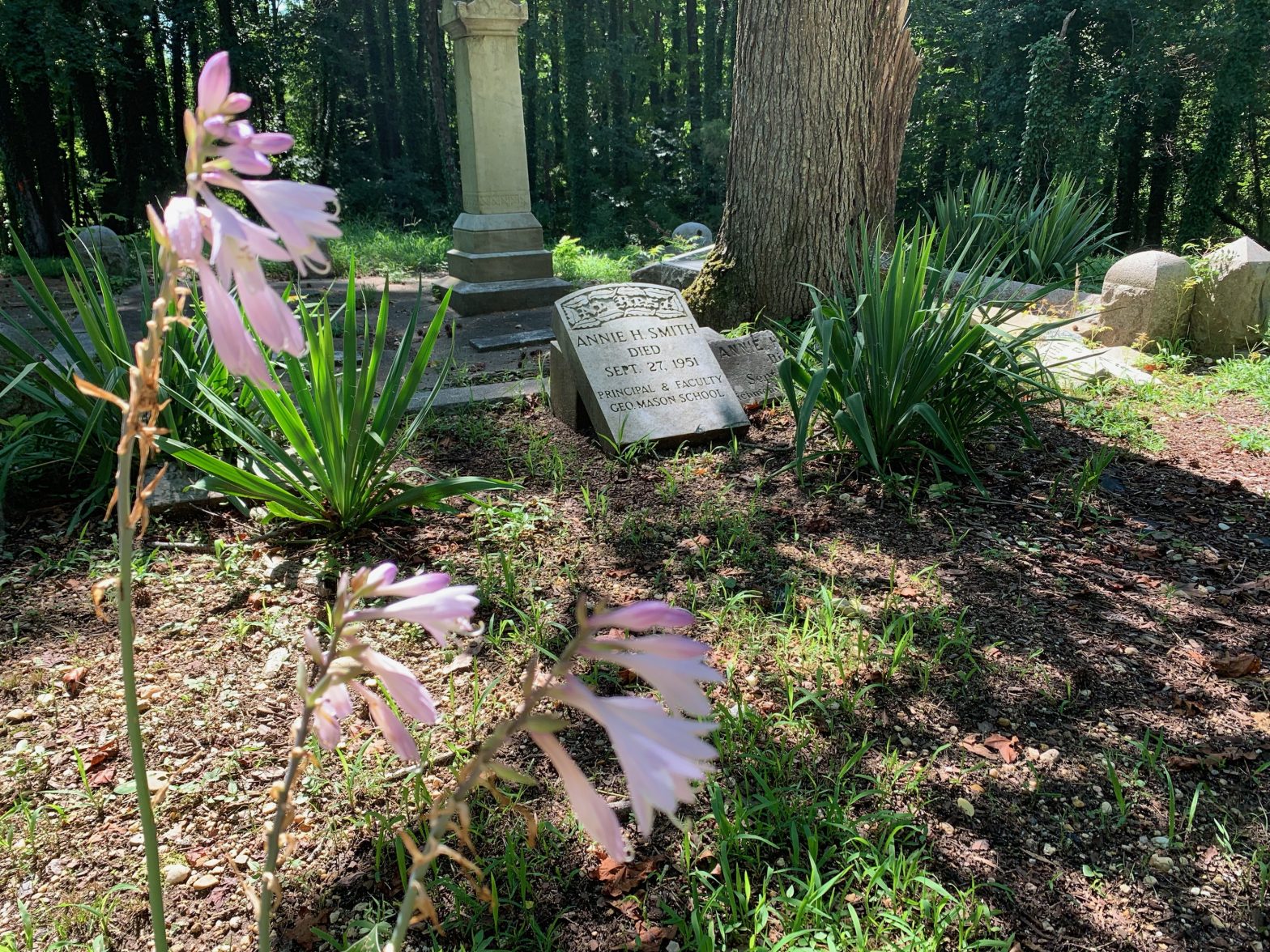
Two conservation projects that received funding from the Virginia Outdoors Foundation’s Open Space Lands Preservation Trust Fund were recently awarded silver Governor’s Environmental Excellence Awards.
The awards program, which is run annually by the Virginia Department of Environmental Quality and the Virginia Department of Conservation and Recreation, recognizes the significant contributions of environmental and conservation leaders in four categories: sustainability, environmental project, land conservation, and implementation of the Virginia Outdoors Plan. The awards are given to businesses and industrial facilities, not-for-profit organizations, and government agencies.
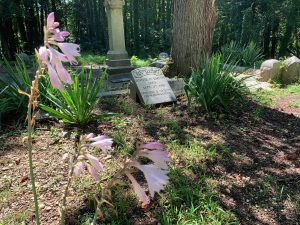
One award was given to VOF and the Enrichmond Foundation for their efforts to conserve and protect Historic Evergreen and East End Cemeteries in the City of Richmond and Henrico County. In 2016, VOF allocated $400,000 from its Preservation Trust Fund for the preservation and restoration of the cemeteries, which are among the largest and most significant historic African American cemeteries in the nation. Learn more about the project’s history and how to get involved in the restoration effort by visiting https://enrichmond.org/evergreen-cemetery/.
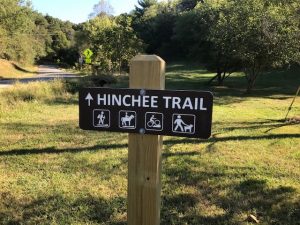
The second award was given to the Roanoke County Department of Parks, Recreation & Tourism for its Hinchee Park project, which provides the opportunity for visitors to bike, walk or ride horses from the Hanging Rock Battlefield Trail to the 12,000-acre Carvins Cove Natural Reserve. Adjacent to an existing natural reserve, Hinchee Park creates a 235-acre reserve, including a permanent conservation easement for 200 acres. This project acquired right-of-way interest in land for open space and park purposes, forest preservation, outdoor recreation and conservation. The project partners included the Pathfinders for Greenways, the Beirne Carter Foundation, VOF, the Virginia Land Conservation Fund, the Hinchee Pace family, and more than 200 individual donors.
Mariel Goss, Retreat Farm, Orange County
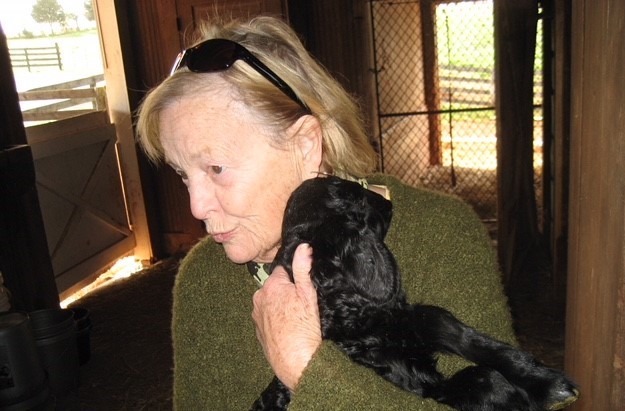
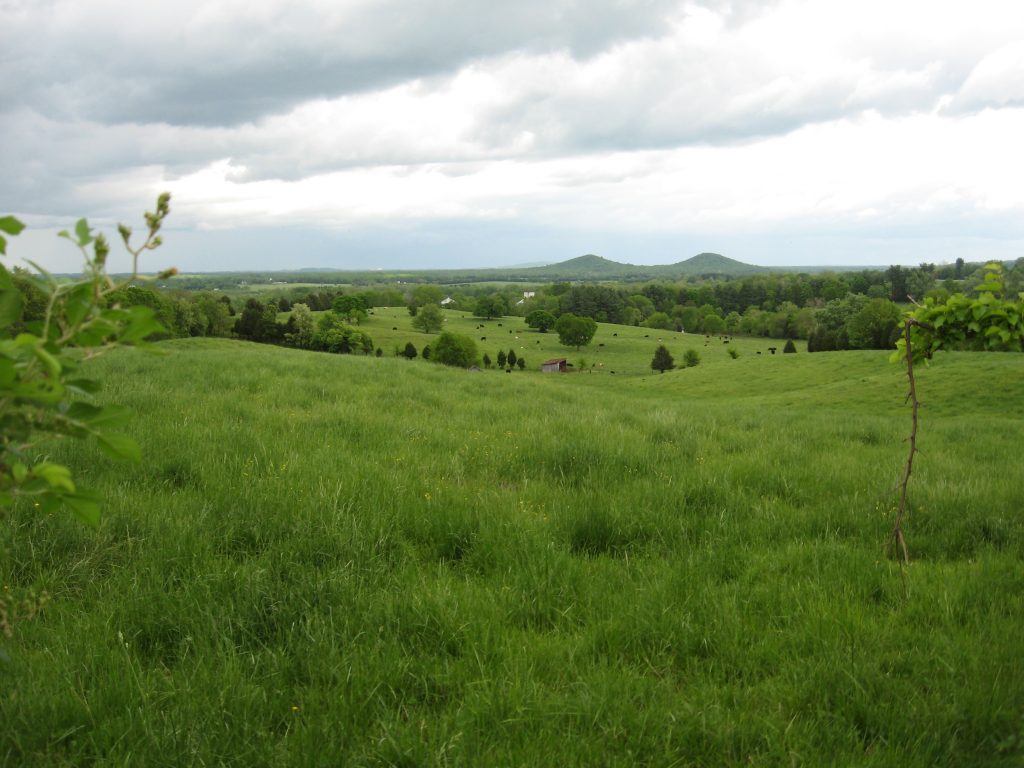
Mariel Goss has always loved farm animals. She spent her childhood on the family cattle farm in western Pennsylvania, where she kept Easter chicks and ducklings in her bathtub—at least, she says, until her mother found out.
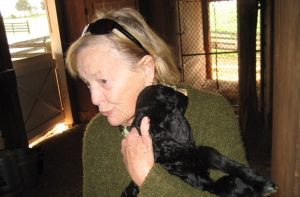
Now she has her own farm, and while she leaves the chicks outside, she is still doing things her way. Inspired by the work of the Livestock Conservancy to protect rare livestock breeds from extinction, she is raising two breeds of heritage sheep. “They were going to get lost if someone didn’t keep them going,” she says.
According to the Food and Agriculture Organization of the United Nations (the FAO), 20 percent of livestock breeds are at risk of extinction. This is because the factory farms that produce most of our food rely on just a few select breeds. Only six different livestock breeds, the FAO estimates, provide 90 percent of the food supply in developed nations. This lack of genetic diversity negatively affects the health of the livestock by limiting the gene pool, making the animals more vulnerable to disease outbreaks and their spread.
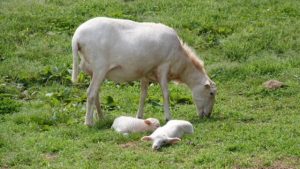
Goss and her husband raise their heritage sheep on Retreat Farm, which they bought in 1997. The 582 acres had previously been leased out to a cattle operation, and at the time the streambanks were in rough shape. With farm manager Frank Gillan, the Gosses have worked hard to rehabilitate them.
“The cattle had access to the streams, so the banks were eroded and the stream was full of silt,” says Gillan. “The Culpeper Soil and Water Conservation District was encouraging large farms in the area to think about protecting the water, and they helped us put up fencing to keep livestock out and replant the banks with trees.”
In 2009, the Gosses made those water protections permanent by donating an easement to the Virginia Outdoors Foundation. The easement requires 50-foot vegetated buffers, ensuring protections in the Rapidan-Cedar Run watershed, which drains into the Rappahannock River. In all, 20,000 feet of stream banks and three ponds are protected by about 15 acres of fenced and treed buffers.
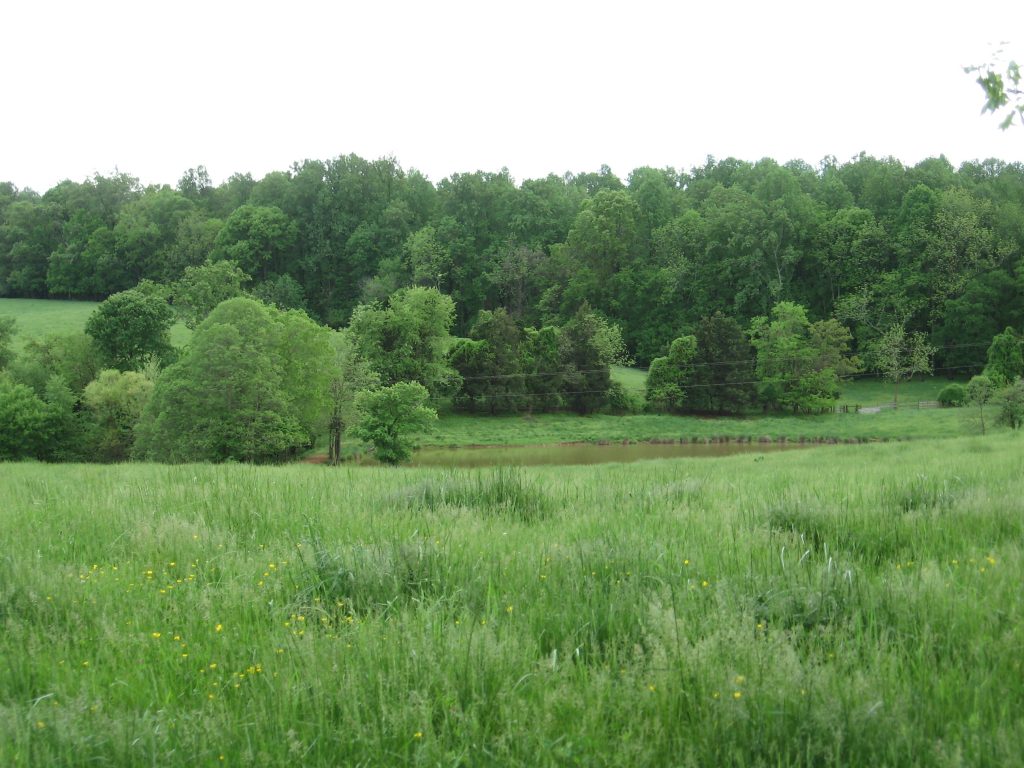
Other clean water practices, Gillan says, include no-spray and no-till pastures, rotational grazing and co-grazing, in which sheep and chickens rotate pastures together. As the sheep forage, the chickens act as natural de-buggers, eating the insects that are left behind and spreading fertilizing manure around.
These efforts were recognized in 2019, when the Culpeper SWCD nominated Retreat Farm for a Clean Water Farm Award through the Virginia Department of Conservation and Recreation (DCR). Retreat Farm was counted among DCR’s “Grand Basin” winners, an additional honor for farms that the agency considers role models for water protection across the state.
Now the Gosses lease much of the farm, complete with its permanent water protections, to another cattle operation. But they have kept 100 acres for themselves, some free-range poultry, and their rare sheep, whose genetic makeup makes them good foragers, great mothers and disease- and pest-resistant.
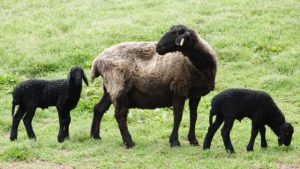
“They’re independent as long as you give them the space they need,” says Gillan. This makes them ideal for smaller farming operations, the kind they were bred over generations to thrive on.
In this way, heritage breeds connect us to our past, preserving a way of farming that reaps benefits from the whole animal over its life cycle instead of the modern practice of breeding for only one trait, such as milk or meat production.
“Today, the heritage breeds are truly a part of world history,” Goss says. “It’s fascinating to learn how some of these breeds have survived, and so important to preserve their genetics for the future.”
